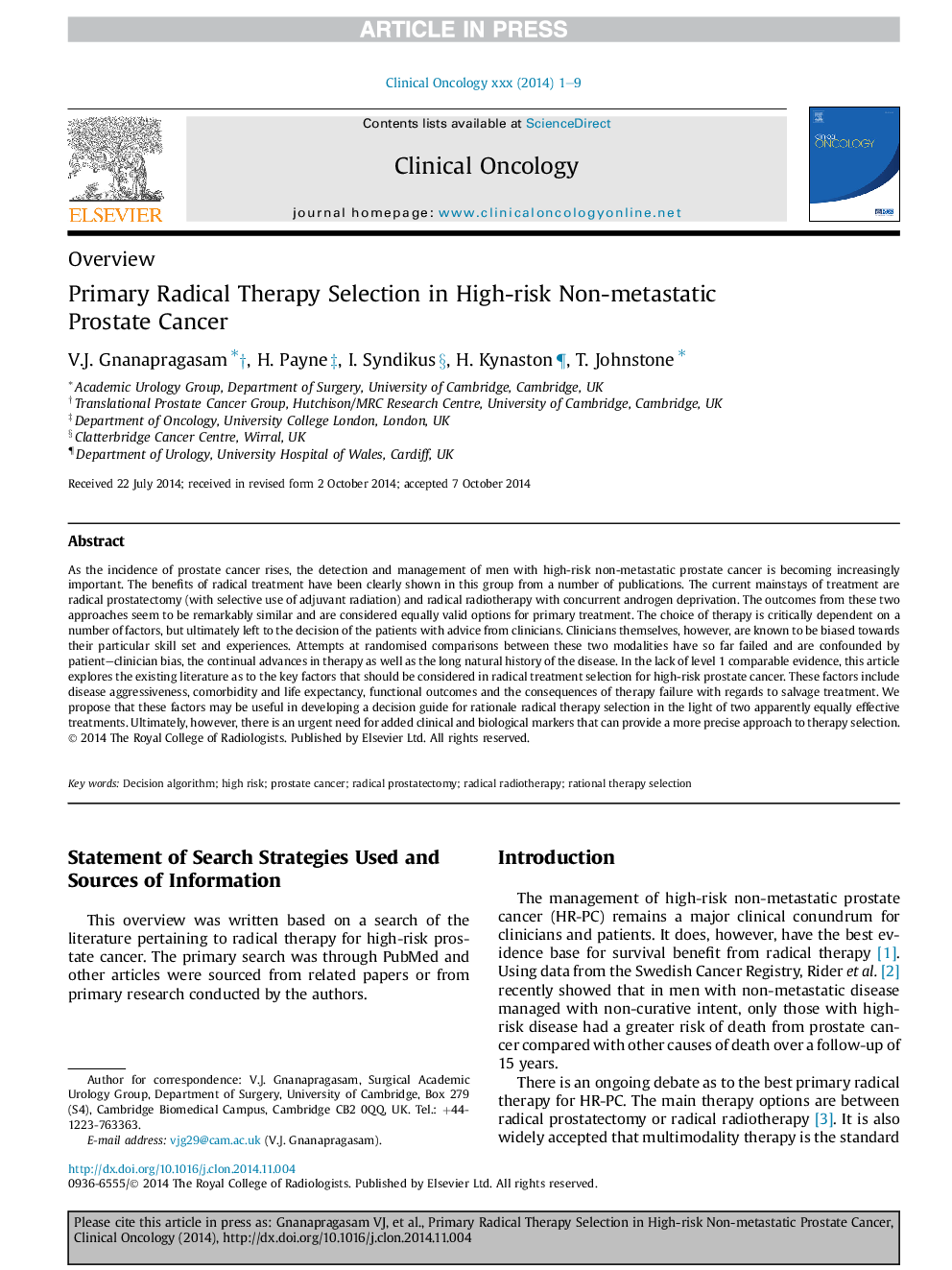| Article ID | Journal | Published Year | Pages | File Type |
|---|---|---|---|---|
| 5698697 | Clinical Oncology | 2015 | 9 Pages |
Abstract
As the incidence of prostate cancer rises, the detection and management of men with high-risk non-metastatic prostate cancer is becoming increasingly important. The benefits of radical treatment have been clearly shown in this group from a number of publications. The current mainstays of treatment are radical prostatectomy (with selective use of adjuvant radiation) and radical radiotherapy with concurrent androgen deprivation. The outcomes from these two approaches seem to be remarkably similar and are considered equally valid options for primary treatment. The choice of therapy is critically dependent on a number of factors, but ultimately left to the decision of the patients with advice from clinicians. Clinicians themselves, however, are known to be biased towards their particular skill set and experiences. Attempts at randomised comparisons between these two modalities have so far failed and are confounded by patient-clinician bias, the continual advances in therapy as well as the long natural history of the disease. In the lack of level 1 comparable evidence, this article explores the existing literature as to the key factors that should be considered in radical treatment selection for high-risk prostate cancer. These factors include disease aggressiveness, comorbidity and life expectancy, functional outcomes and the consequences of therapy failure with regards to salvage treatment. We propose that these factors may be useful in developing a decision guide for rationale radical therapy selection in the light of two apparently equally effective treatments. Ultimately, however, there is an urgent need for added clinical and biological markers that can provide a more precise approach to therapy selection.
Related Topics
Health Sciences
Medicine and Dentistry
Oncology
Authors
V.J. Gnanapragasam, H. Payne, I. Syndikus, H. Kynaston, T. Johnstone,
